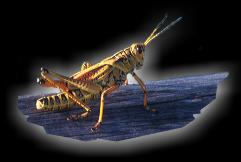Latvia
House of the Blackheads
 |
This gorgeous building has become a symbol of Riga, its facade is the most elaborately decorated in Riga with numerous sculptures, coats of arms of various Hanseatic cities and paintings. This building also houses one of the most important places for any tourist to Riga, the Tourist Information Centre.
So who were the Blackheads and what was their story? The Blackheads Society was founded in the 13th century as a gentlemen’s club for wealthy single merchants and their journeymen. In 1477 they rented the Great Guild’s New Hall, which was housed in what is now the Blackheads House and in 1773, when the Great Guild moved premises, they bought it. Not a bad little bachelor’s pad. The society’s members were mainly German, but there were also English, Scottish, Dutch, Swedish and Norwegian members.
The Blackheads were known for their festivities which they organised, not only for themselves but also for the citizens of Riga. They held many different festivals, carnivals and tournaments. The Balls organised at the Melngalvju nams were famous all over Europe, but were of course, only for members and other aristocrats. It is well known that Russian tsars and tsarinas often frequented such balls.
The society’s not so politically correct name originated from one of their patron saints; St Maurice was supposedly a black African Christian Roman commander who died as martyr after refusing to kill fellow Christians. St Maurice’s head was depicted on the Blackheads coat of arms, thus giving them their name.
The building was unfortunately destroyed, along with almost all of the Town Hall Square and nearby St Peter’s church tower, in World War II. Inspired by an engraving in the portal which read “Should you ever see me falling, raise me up, it’s your callingâ€, Riga chose to rebuild this monument and in 1999 the reconstruction was completed.
